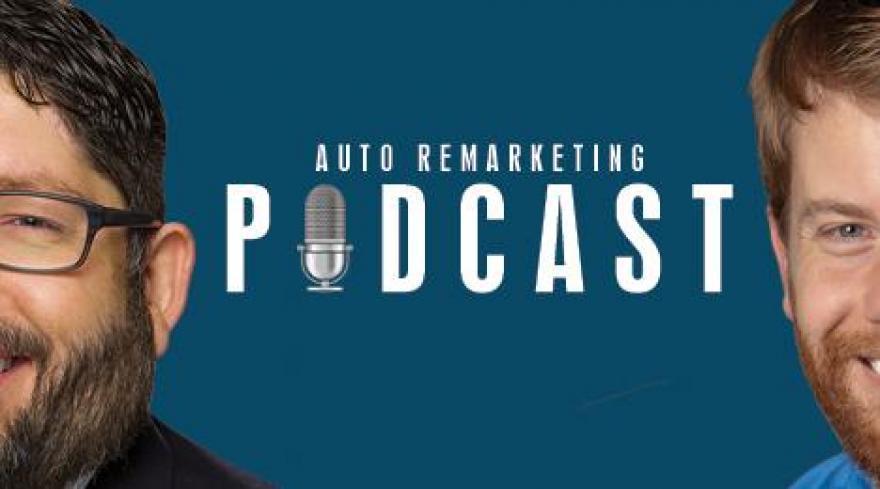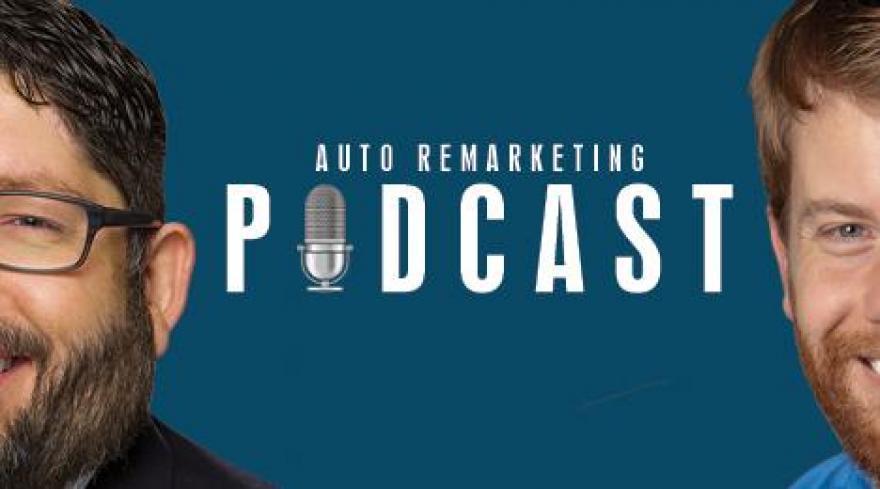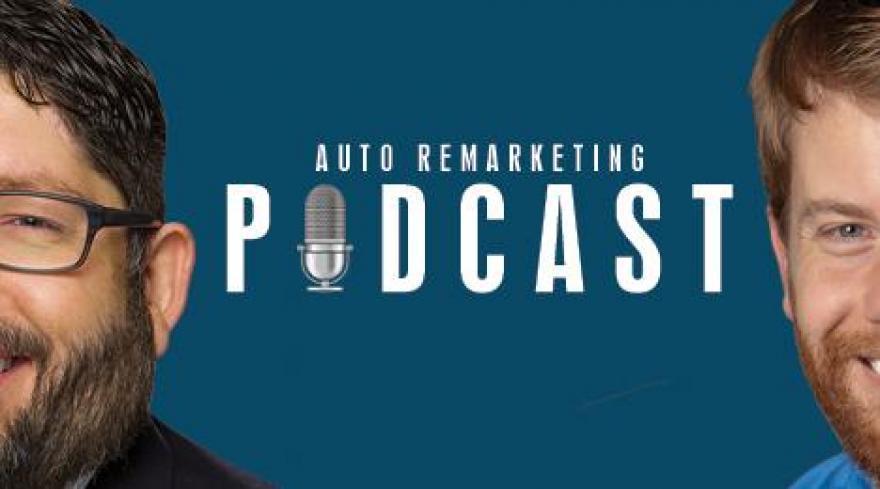Stephanie Alsbrooks is the founder and chief executive officer of defi SOLUTIONS, which provides loan origination and analytics tools to an array of auto finance companies.
Soon after a panel discussion during this year’s National Automotive Finance Association annual conference in Plano, Texas, Albrooks joined Nick for a discussion about the challenges finance companies and other service providers still must clear to leverage all of the capabilities technology can offer.
The full episode can be found below.
Download and subscribe to the Auto Remarketing Podcast on iTunes or on Google Play.
You can also listen to the latest episode in the window below.
Catch the latest episodes on the Auto Remarketing Podcast homepage and on our Soundcloud page.
Please complete our audience survey; we appreciate your feedback.
With the momentum that has lifted the banking sector’s performance over the first half of the decade slowing in major markets — perhaps even auto financing — Boston Consulting Group (BCG) says banks must leverage digital technology to battle disruption and stem the threat of disintermediation brought on by fast-moving, newer entrants.
If banks stand pat on the technology front, BCG cautioned that institutions might pay the price with regard to staying power and profitability, according to a new report titled, Global Risk 2019: Creating a More Digital, Resilient Bank.
This ninth annual survey of the health and performance of the banking industry by BCG examined global and regional profitability levels and how institutions can raise them, exploring ongoing regulatory trends and how banks can navigate them. Experts also examined how core risk and treasury functions must adapt both their operating models and their roles in the wider banking organization to be more efficient and effective.
“As digitization opens the financial services ecosystem to new and niche players, we expect to see fewer full-stack banks,” said Gerold Grasshoff, the global leader of BCG’s risk management segment and a coauthor of the report.
“As the banking value chain breaks up, banks will get the opportunity to reposition themselves. They will likely pursue a mix of strategies, such as becoming platform leaders, being specialist providers and promoting infrastructure-as-a-service offerings,” Grasshoff continued.
“The cost basis will also change, and banks will need to be leaner and more efficient if they are to compete effectively against digitally mature peers and fintechs,” he went on to say in the report that can be downloaded here.
A three-speed world for economic profitability
According to the report, while banking remains profitable on an absolute basis, BCG found that total economic profit (EP) — which adjusts for risk and capital costs — softened again in 2017 (the last year for which year-end statistics are available). It was a second straight year of decline.
Since reaching a global-average high of 16 basis points in 2015, experts noticed that EP has slumped, falling to just 8 basis points in 2017. With that slide, BCG surmised that average banking performance is now on a par with that of 2013, when the banking industry started to regain its footing after the global recession.
In Europe, BCG pointed out that banks have remained mired in negative growth, hemmed in by low interest rates and nonperforming loans. By contrast, banks in North America have benefited from increasing interest rates, although rising costs edged total EP down for the second straight year.
In Asia-Pacific, the report showed banks experienced the third consecutive year of declining EP.
“Overall, banking remains a three-speed world in which European banks continue to struggle, North American and Asia-Pacific banks strive to stay the course, and the developing markets of South America and the Middle East and Africa continue to show high profitability. Yet systemic issues hound each region,” BCG said.
Setting the regulatory stage for the future of banking
The report explained that for regulators, instilling trust in the strength and resiliency of financial markets has become a dominant focus.
“Banks must improve the quality and efficiency of regulatory compliance to meet their ongoing financial stability, prudent-operations and resolution obligations,” report authors said. “Achieving this will require finding leaner and smarter ways to manage the high volume of regulatory revisions, as well as experimenting with new technologies and partnerships to drive down the cost of know-your-customer documentation and to improve anti-money-laundering processes.
“Keen to protect financial markets from future shocks, regulators are trying to anticipate the ways that technology will reshape the banking ecosystem and, with it, their own role in establishing guidance and ensuring consistent standards,” authors added.
Since 2009, BCG tallied that banks worldwide have paid $372 billion in penalties. The firm tabulated that regulators assessed $27 billion in penalties on European and North American banks in 2018, an increase of $5 billion year-over-year.
Mortgage-related misconduct in the U.S., money laundering and interbank-offered-rate-related market manipulation across regions are among the factors sparking regulatory ire, according to the report.
As banks digitize, so must risk and treasury
The report went on to mention that banks’ risk and treasury functions will change in profound ways during the coming years.
Experts projected both functions face a broader mandate with a larger slate of risks to manage, a growing need for integrated steering to protect banks’ interests and an equally growing need to make the most strategic use of banks’ balance sheet resources.
“Delivering on this mandate will require risk and treasury to operate faster and more incisively, backed by real-time data, predictive analytics and end-to-end automation,” report authors said.
“Risk and treasury functions that commit to ‘going digital’ in these ways will become not only more efficient operators but also more effective strategic partners in delivering value to banks,” they added.
Experian sees the productivity enjoyed by OneMain Financial as an example of what the Experian Ascend Technology Platform can do for auto finance companies and other firms involved in financial services.
Experian said that today’s successful businesses rely on the latest market intelligence and the most up-to-date consumer insights. Since launching less than 18 months ago, the company highlighted Experian Ascend Technology Platform has been helping businesses, including 15 of the world’s top financial institutions, stay ahead of rapidly changing consumer behaviors by leveraging the power of data, artificial intelligence and machine learning.
The Ascend Analytical Sandbox was the first solution built on the Ascend Technology Platform. Like the name suggests, Experian said, a sandbox is an environment that contains all the data and analytics tools needed to create, build and gain insight from data.
Experian’s hybrid-cloud system can give businesses instant access to more than 17 years of depersonalized credit data on more than 220 million U.S. consumers, as well as alternative data, commercial and auto data and other exclusive data assets.
With the Ascend Analytical Sandbox, businesses also have access to industry-leading analytics and data visualization tools, including SAS, R, Python, H2O, Tableau and others, to mine and manipulate data, combine it with their own and view accurate consumer stories in near real-time.
“The Ascend Analytical Sandbox has truly been an incredibly successful product launch for Experian. The benefits available through this tool are exactly what businesses have been asking for – faster and more informed lending decisions with greater accuracy,” said Alex Lintner, group president at Experian Consumer Information Services.
“It’s not just traditional lenders who are benefitting. Our partners in fintech, retail, mortgage, auto and insurance are also seeing how we are connecting everything — the data, the technology and the insights to create real business opportunities,” Linter said.
OneMain Financial, a lender with over $16 billion in assets, turned to Experian to improve its risk modeling and credit portfolio management capabilities. Since using the Ascend Technology Platform, Experian reported that OneMain Financial has seen significant improvements in reject inferencing — a process that looks at the performance of loan applicants who were denied in the underwriting process.
Experian said this process has traditionally been expensive, manually-intensive and time consuming. According to OneMain Financial, the Analytical Sandbox on Experian’s Ascend Technology Platform has shortened the process to less than two weeks from up to 180 days.
“Experian’s Ascend Technology Platform and Analytical Sandbox is an industry gamechanger,” OneMain Financial senior managing director and head of model development Michael Kortering said. “We’re completing analyses that just weren’t possible before and we’re getting decisions to our clients faster, without compromising risk.”
Like many businesses, OneMain Financial sees Experian’s Ascend Technology Platform and Analytical Sandbox having an impact beyond core risk modeling. For example, the company also uses the platform to gain market insights and understand market share.
Through the anonymized database in the Analytical Sandbox, OneMain Financial can calculate its share percentage in various loan categories, including credit score and geography, to make more informed decisions around business and marketing strategies.
“The use cases available through Experian’s Ascend Technology Platform are endless,” Kortering said.
To request a demo and learn more about Experian’s Ascend platform and suite of products including the Analytical Sandbox, visit www.experian.com/consumer-information/ascend.html.
Ken Kertz summed up FICO’s 2019 U.S. Consumer Survey of Vehicle Finance Perceptions with a point relevant whether a finance company only has a footprint in a couple of states or builds its portfolio from originations nationwide.
“The takeaway for lenders is it’s all about convenience. The less decisions people have to make, the better. The more collaboration, be it online or at the dealership, the better,” Kertz told Auto Fin Journal as FICO released its newest research that looked at how consumers view the financing of their new- and used-vehicle purchases, as well as how vehicle finance companies are currently meeting customer expectations.
The survey determined that there is a disconnect between consumers’ finance preferences for current loans and consumers’ finance preferences for future loans — with the largest gap centered on digital (nearly a 15-point difference). More than a quarter of consumers (28 percent) listed online financing as their first choice for their next loan, an increase from the number of current online borrowers (13 percent).
Conversely, 63 percent of consumers applied for their current automotive loans from the dealership, but only 40 percent said dealership financing would be their first choice for their next automotive loan.
Kertz, who is senior director and practice leader for auto and motorized at FICO, elaborated about the leading points of the latest survey.
“From my side of the story, I think this is a continuing process,” Kertz said. “Consumers are still seeking a frictionless buying experiences. It’s still not quite there yet. They truly want to take control as much as lenders, dealers and OEMs will give them. They still want to feel in the end that they got a good deal, that they’ve made an educated decision both from their standpoint and that the lending institution and the dealership are helping to further that education.
“We’re seeing the digital piece climb up a little bit. It is going to take a few years, maybe three to five, where you can do the majority of your process online, but that’s creeping up. The dealers are obviously still that central focus to do all-in-one shopping experience both for the vehicle and loan,” he continued.
“It’s still revolving around what the lenders can provide the customers from a technology standpoint. When it’s frictionless as possible, the consumer will take advantage of that,” Kertz went on to say. “The technology piece is hard. We hear from our customers that’s it’s going to be another three to five years to remove a lot of that friction to make the researching, the getting the loan, the getting the funding, totally taking place without any human intervention, just go to the dealer and pick up the vehicle.
“For me, the message really is technology is going to help shape the process over the next few years. It’s not there yet. It’s going to take some time. The consumer will take advantage of that technology as much they can give them over that period,” he added.
While dealership financing continues to be the preferred loan option, FICO discovered online loans are gaining traction, which is being driven by the changing consumer expectations. Consumers cited the following top factors for financing options:
• For online financing, consumers most valued convenience, comparison shopping across finance companies and speed.
• For dealership financing, consumers most valued one-stop shopping, possible promotions and discounts and a tie between feeling they might get a better deal and that’s how financing was secured last time.
• For bank or financial institution financing, consumers most valued trusting and liking their bank, believing they get the best rate at their bank and negotiating power.
“With the accelerating adoption of digital, our findings suggest that the U.S., as well as the global market, may be reaching a tipping point where the shift to digital happens rapidly given consumer expectations and the availability of new technology,” Kertz said in a news release.
“Consumers want simplicity and transparency whether financing online or at the dealer, and need to trust the process. Consumers will have a stronger say in how, where and who they do business with, and will greatly influence the emerging business models available today,” he added.
Currently, the majority of the consumers (78 percent) are initiating automotive loan discussions. FICO indicated 95 percent of consumers would consider only between one to three finance companies. They care most about their monthly payment (92 percent), length of term (90 percent) and interest rate (87 percent).
FICO mentioned other significant findings from its new survey included:
• Forty-eight percent of consumers considered only one lender, and 47 percent considered two to three lenders.
• The majority of consumers (78 percent) have to initiate their financing discussions today.
• Ninety-one percent of consumers would accept (or at least consider) an instant vehicle loan offer if that meant they could avoid dealing with a bank or doing extra paperwork.
• The U.S. had the lowest percentage of loans for a new vehicle at 48 percent, compared to 61 percent globally.
• Sixty-eight percent of U.S. consumers rated the financing experience as easy, which tied for the second lowest ranking in surveyed countries behind New Zealand’s 66 percent with the global average at 74 percent.
“Consumers are getting more and more control over the purchasing process. It’s really a consumer empowerment message,” FICO senior manager of solution marketing for risk Mica DuBois told Auto Fin Journal.
“Those lenders and the mix of providers that meet consumers and reduce friction and care about those touchpoints across the entire life cycle, those are the ones who are going to win in the long term. We need to keep doing what's working and close any experience gaps that might exist,” DuBois went on to say.
FICO’s independent research surveyed 2,000 adult consumers across nine countries, including the U.S., Canada, Mexico, Chile, Australia, New Zealand, Germany, Spain and the United Kingdom. The respondents were between the ages of 18 and 64 who acquired a loan or lease on a new or used vehicle within the last three years.
Alex Maritczak recently returned to North Carolina and joined Nick for a conversation about how auto finance companies and technology developers are collaborating on new solutions.
The global auto finance leader at Ernst & Young who also led panel discussions during the Automotive Intelligence Summit described how firms are striving for new developments while also retaining market share and maintaining compliance mandates.
The full episode can be found below.
Download and subscribe to the Auto Remarketing Podcast on iTunes or on Google Play.
You can also listen to the latest episode in the window below.
Catch the latest episodes on the Auto Remarketing Podcast homepage and on our Soundcloud page.
Please complete our audience survey; we appreciate your feedback.
In an effort to bring together vehicle shoppers, dealerships and finance companies, truPayments announced that it has become a participant in the CDK Global Partner Program.
As a member of one of the largest third-party partner programs in the industry, truPayments and its tru Shop-by-Payment are now part of a marketplace of applications and integrations that CDK Global, a leading enabler of end-to-end automotive commerce, developed to help automotive dealers succeed.
“Joining the CDK Global Partner Program will give CDK dealers easy access to the tru Shop-by-Payment product,” truPayments chief executive officer Tarry Shebesta said in a news release.
Shebesta explained tru Shop-by-Payment is designed to provide a unique one-to-one personalized shopping experience, which can connect the right personalized inventory and financing options to each customer based on their unique preferences and profile (including real credit). Shebesta insisted shoppers will discover vehicles they didn’t know they could afford or a payment they didn’t know they could get.
By transforming and personalizing the shopping experience, tru Shop-by-Payment can engage, surprise and delight customers — accelerating their movement through the shopping and buying processes. The company went on to stress tru Shop-by-Payment can enhance dealer CSI scores, online reviews, sales volume and front and back-end gross.
“We’re very pleased to introduce truPayments as the newest member of the CDK Global Partner Program,” CDK Data Services vice president and general manager Howard Gardner said.
“truPayments is a welcome addition to our vibrant program, which provides dealers with a range of partner choices and the assurance that their programs can be seamlessly integrated with our applications,” Gardner continued.
Gardner added the CDK Global Partner Program provides its partners with access to a diverse CDK ecosystem through the ability to integrate with a range of CDK applications and CDK dealer websites.
With credit unions collectively having an immense piece of the auto finance market, institutions are looking to retain that share and even gather a bit more by leveraging technology.
CU Direct chief revenue officer Phil DuPree joined Nick for this episode recorded during NADA Show 2019 where they discussed how credit unions and dealerships are working together.
The full episode can be found below.
Download and subscribe to the Auto Remarketing Podcast on iTunes or on Google Play.
You can also listen to the latest episode in the window below.
Catch the latest episodes on the Auto Remarketing Podcast homepage and on our Soundcloud page.
Please complete our audience survey; we appreciate your feedback.
ACI Worldwide is making quite a payment to Western Union.
The companies announced on Thursday they have entered into a definitive agreement for ACI to acquire Speedpay, Western Union’s United States bill pay business, for $750 million in an all-cash transaction. Officials indicated this acquisition brings together two leading bill pay portfolios in the rapidly-evolving U.S. electronic bill pay and presentment (EBPP) market.
The companies said the transaction is subject to customary closing conditions and regulatory approvals and is expected to close by the end of the second quarter.
A news release noted the ACI and Speedpay bill pay solutions will serve more than 4,000 business customers across the U.S., bringing expanded reach in existing and complementary segments such as consumer finance, insurance, healthcare, higher education, utilities, government and mortgage.
The companies said this will enable the combined business to more effectively serve a rapidly-evolving category as well as pursue additional vertical segments.
Officials explained the acquisition of Speedpay will increase the scale of ACI’s On Demand platform business and will accelerate platform innovation through increased R&D spend and investments in ACI On Demand’s platform infrastructure. ACI will bring together the Speedpay and UP Bill Payment platforms into a unified bill payment platform that will support billions of transactions.
Moreover, officials added the combined ACI and Speedpay team of bill payments experts will bring together decades of vertical experience and payments through leadership, developing and delivering end-to-end solutions that more efficiently address specific business needs and add more value to customers and partners.
“This acquisition reinforces ACI’s ‘any payment, every possibility’ vision and accelerates our ability to capitalize on the growing global payment transaction opportunity over the next five years. It presents a great opportunity for ACI to strengthen and add scale to our On Demand business, and provides fuel for growth and increased R&D investment which will benefit both ACI and Speedpay customers,” said Phil Heasley, president and chief executive officer of ACI Worldwide.
“We are excited to welcome the talented Speedpay team into the ACI family,” Heasley continued. “With decades of proven success, the ACI and Speedpay teams have a deep understanding of bill payments, and the combination of our portfolios delivers an unmatched value proposition.”
With more than 15 billion transactions in 2018, ACI insisted the U.S. bill pay market continues to grow at steady mid-single digit rates. The company noted this growth is driven by factors such as increased consumer adoption of digital and mobile payments, the move to real-time payments and digital subscription billing.
Western Union president and chief executive officer Hikmet Ersek said, “Divesting the Speedpay business allows us to concentrate our resources on our cross-border money movement strategies and monetize a non-core asset for our shareholders.
“Our strategy remains focused on expanding our digital services, leveraging our platform to unlock new cross-border, cross-currency payments opportunities, and generating additional operating efficiencies,” Ersek continued.
ACI mentioned that the addition of the Speedpay business, generating more than $350 million in revenue and $90 million in adjusted EBITDA in 2018, provides compelling financial benefit to ACI and is expected to materially improve net adjusted EBITDA margin in ACI’s On Demand segment.
Centerview Partners is acting as financial adviser to Western Union and BofA Merrill Lynch is acting as financial advisor to ACI. Sidley Austin is Western Union’s counsel, and Jones Day is advising ACI.
As the company announced its new Device-as-a-Service (DaaS) subscription business model, CalAmp chief executive officer Michael Burdiek explained the three main elements within the DaaS space that make it attractive and potentially profitable.
In additional comments sent to Auto Fin Journal augmenting this week’s news release, Burdiek pointed out the revenue opportunities stem from a simplified subscription package which includes the device and a host of services, full lifecycle device management and efficient capital management.
“The DaaS model provides a cost-effective and capital-efficient way for businesses to bring telematics innovations to market,” Burdiek said.
“Subscription-based models allow companies to better manage expenses and optimize operations by providing the option to adopt a range of microservices based on changing business needs,” he continued.
“This allows enterprises to focus on core business while leveraging CalAmp’s industry-recognized IoT and machine-to-machine communications expertise to streamline data insights and deliver best-in-class telematics services,” he went on to say.
At CalAmp, the company highlighted its DaaS business model can reduce the complexity of telematics deployments by offering a subscription-based service, including a telematics device bundled with access to a broad portfolio of connected car micro-services, such as CrashBoxx crash response and driver behavior services.
The subscription model also can enable business customers to leverage more of CalAmp’s research and development investments and full portfolio of telematics services to lower their business costs and drive new revenue streams from subscription services.
The global DaaS market is expected to grow by approximately $8 billion by 2023, according to Market Research Future. CalAmp contends the growing momentum is a result of increased demand for subscription-based services that provide flexible business terms while enabling enterprise customers to bring innovative telematics solutions to market.
Burdiek added that the complexities of delivering an end-to-end telematics solution is often underestimated, leading to operational and customer service issues. A subscription service model can allow enterprises to focus on their core business while leveraging CalAmp’s industry-recognized machine-to-machine communications expertise to streamline the flow of data insights and deliver best-in-class telematics services.
“The Device-as-a-Service model provides a cost-effective and capital efficient path for our business customers to more easily bring our telematics innovations to market,” Burdiek said in a news release
“Subscription-based models allow companies to better manage expenses and optimize operations by providing the option to adopt a range of micro-services based on business needs,” he reiterated.
“We anticipate the increased level of flexibility and seamless digitalization will help us build stronger partnerships and result in greater customer loyalty while driving recurring revenue.”
The new subscription model also can allow enterprises to increase telematics security, ensure vehicle device compatibility and capture valuable data insights that improve customer service, while expanding client access to CalAmp’s CrashBoxx instant crash alert services, driver safety and other connected car micro-services.
Burdiek closed his comments to Auto Fin Journal by emphasizing how CalAmp’s past experience and technology in the auto space help the company to roll out this newest product?
“CalAmp heritage in the telematics space has enabled us to have a deep understanding of our customers pain points of deploying and maintaining telematics solutions,” he said. “With DaaS, business customers will be able to leverage more of CalAmp’s research and development investments and full portfolio of telematics services to lower their business costs and drive new revenue streams from subscription services.”
As the company gears up to host FICO Auto Mastermind 2019 this week, Nick shared his conversations with a pair of FICO experts who were in San Francisco earlier this year for the Vehicle Finance Conference hosted by the American Financial Services Association.
FICO chief analytic officer Scott Zoldi described what clean data really is as FICO vice president of security solutions Doug Clare revisited the ongoing challenge of maintaining cybersecurity.
The full episode can be found below.
Download and subscribe to the Auto Remarketing Podcast on iTunes or on Google Play.
You can also listen to the latest episode in the window below.
Catch the latest episodes on the Auto Remarketing Podcast homepage and on our Soundcloud page.
Please complete our audience survey; we appreciate your feedback.












